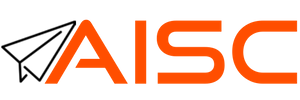The U.S. Federal Aviation Authority (FAA) released its updated policy on Unmanned Aircraft (UA) Operations in the National Airspace System (NAS) on July 11th. The purpose of this policy is to provide information and interim guidance on air traffic policies and prescribes procedures for the planning, coordination, and services of UA to its air traffic organization service units.
If you are thinking about operating a UA for your business in the U.S., this document is useful for getting a handle on how the FAA is approaching UA.
The policy states the three types of operations currently authorized in the U.S.
- Public: Public operations are those which are inherently governmental. They require Certificates of Authorization (COAs) which are discussed in the policy. This is of little interest to most businesses, but it may be worth your time to see what rules are placed on COA holders. The procedures may be imposed on your operations in the future or you may want to incorporate some of them, even if they are not required.
- Hobby: Hobby covers sport and recreation uses of UA. Their operations are authorized in Advisory Circular (AC) 91-57. As a business owner, you CANNOT fly under AC 91-57. It is useful, however, to get to no the safety standards in 91-57 as they are a basis for small UA civil operations.
- Civil: Civil operations are those that are not public operations. This means you, the business owner. I refer to them as commercial operations to be perfectly clear. The policy states that civil operators can only operate by obtaining a Special Airworthiness Certificate – Experimental Category. There are some operators currently using or pursuing this option, but the overwhelming majority are using the Section 333 Exemption, which is not addressed in the policy. This exemption is a request for relief from the current rules and will allow you to fly under a prescribed set of circumstances within a few months of submission (assuming a favorable grant). The exemption is the best course of action until the final small UA rules are effective, probably sometime next year. When, is anyone’s guess. I would be speculating, but this policy is effective until July 10, 2016, so I doubt any rules would become effective before that date.
If the airspace discussions in this policy are new or confusing, I encourage you to take a look at our All Airspace for UAV Pilots course. It is a self-paced course that breaks down the complexities of airspace for new small UA pilots and owners.
